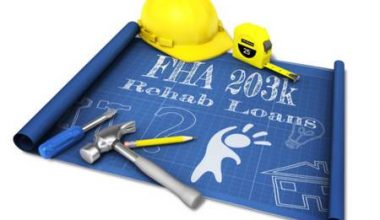What is Bargain and Sale Deed
A bargain and sale deed is a legal instrument that allows the prior owner (the grantor) to transfer a property to the current owner (the grantee). This kind of deed is commonly used in real estate foreclosures and tax sales, whereas warranty deeds are frequently used in ordinary property transactions. But then, warranty deeds are preferred by commercial lenders because they guarantee that a property will be free of encumbrances such as title flaws, prior owner’s tax liens, and unknown easements from other properties. These assurances are not provided by bargain and sale deeds.
Regardless, this post will show you what a bargain and sale deed is used for and all you should know about them. It also includes whether or not you should use them.
Bargain and Sale Deed: Overview
Only the seller of a property holds the title and has the authority to transfer ownership, according to a bargain and sale deed. As earlier mentioned, this type of deed does not protect the buyer from liens or other claims on the land, therefore the buyer may be held liable if these difficulties arise.
But because the seller is likely to have little knowledge of the property’s history and status, bargain and sale deeds are commonly used when transferring property in foreclosure or tax sales, explains Eric Maribojoc, Executive Director of George Mason University’s Center for Real Estate Entrepreneurship in Arlington, Virginia.
According to Maribojoc,
“the vendor makes no guarantees with respect to any claims against the property or title flaws.” “The buyer on the other hand, accepts the property subject to any claims or title problems that may exist.”
However, the seller may choose to indicate an encumbrance, such as the fact that there are no overdue property taxes, Maribojoc further explains. As a result, the deed is classified as a “bargain and sale deed with covenants” in this case.
According to Andrew Maguire, a commercial real estate attorney at McCausland Keen & Buckman in Devon, Pennsylvania, bargain and sale deeds are legal in certain jurisdictions including Nevada, New Jersey, New York, Oregon, Rhode Island, and Washington.
“Most buyers of real estate in these states will demand a bargain and sale deed with covenants,” says Maguire, which means “the seller of the property states that it has done nothing to encumber the title to the property being conveyed, except for those encumbrances that are specifically referenced within the deed.”
It’s critical to understand what or who the covenants protect in a bargain and sale deal with. This raises the question, “how does a Bargain and sale deed work?”
How Does a Bargain and Sale Deed Work?
A bargain and sale deed form comprise a number of important details.
- The Mailing Address and Tax Assessor’s Parcel Number: This comes up in the legal description of the property.
- Grantor and Grantee Names: The grantor is the present owner of the property. The grantee is the new owner of the property who is taking over the title.
- A bargain and sale deed confirms that the grantor has the legal right to deed, or transfer, the property to a new owner.
There are no title protections: A bargain and sale document does not guarantee that the property is free of encumbrances or title difficulties. Tax liens, troublesome easements, and third-party claims to the title may be encountered by homeowners who purchase a foreclosed home with a bargain and sale deed. Some buyers conduct a title investigation, get title insurance, and hire a real estate attorney before purchasing a foreclosed home to reduce the dangers associated with a bargain and sale transaction.
What’s the Difference Between Bargain and Sale Deeds and Quitclaim Deeds?
Quitclaim deeds, also known as rapid claim deeds, are infrequently used in commercial real estate transactions to transfer title. They are most typically used to transfer ownership of a property when no monetary compensation is exchanged. Transferring real property between family members or to a living trust (typically as part of estate planning), correcting errors and title defects from a previous transaction, or adding or removing a person from an ownership group are all examples of what might be done.
And because they do not prove that a grantor has the legal authority to deed a piece of land, quitclaim deeds are rarely used in commercial real estate transactions. Grantors deed property that both parties know they do not own in some situations (typically to correct title problems), which is why a quitclaim deed would not be used in a foreclosure auction. A bargain and sale deed is preferable since it establishes a legal right to sell.
There Are Six Different Types of Deeds
Depending on their connection with the buyer or grantee, property owners often deal with six different types of deeds.
Quitclaim Deed
A quitclaim deed transfers property from one owner to another, but it does not guarantee a clear title or indicate that the grantor has the legal authority to deed (transfer) the property. Quitclaim documents are commonly used to correct title mistakes, transfer property between family members or to a living trust, or, more importantly, add or remove people from a group of owners.
General Warranty Deed
A general warranty deed is a document that comes with a commercial real estate sale. It’s essentially an affidavit verifying that the grantor has the legal authority to deed the property to the grantee, and it ensures the title for the duration of the property’s history. It ensures that the buyer will not be confronted with any claims, tax liens, or other encumbrances from the property’s previous owners.
Deed of Grant
A grant deed, also known as a special warranty deed or limited warranty deed, works similarly to a normal warranty deed with one major difference: It only ensures a clear title and the absence of encumbrances throughout the seller’s ownership of the property. A buyer is less protected by this kind of deed than by a general warranty deed, which guarantees a clear title throughout the property’s ownership history. While a grant document does not insulate the buyer from claims made during a previous time of ownership, it does shield the seller from liability.
Bargain and Sale Deed
A bargain and sale deed certifies that the grantor has the right to transfer the title to the property being sold. However, it does not guarantee that the grantee would receive their property free of liens.
Deed of Trust
A deed of trust is a legal document that is attached to some home loans. It is a contract between three parties: a beneficiary (lender), a grantor (borrower), and a trustee (a neutral third party such as a title company). It creates a lien on a piece of property that lasts until the borrower pays off the debt in full.
Mortgage Deed
A mortgage deed is similar to a deed of trust, with one major exception. Only two parties are involved in this kind of deed; the lender and the borrower. A mortgage deed does not include the trustee, who holds the title in a deed of trust. Until the mortgage is paid in full, the lender and the borrower share equal ownership of the property. At that point, the homeowner is the only owner of the property, and he or she is no longer liable for any debts.
Why Is It Important What Kind of Deed You Do?
It’s critical to understand the type of deed that accompanies a property. Any unresolved title issues, for example, add risks to the transaction and can affect your bottom line if you’re an investor buying a home at auction with the intention of flipping it. As a result, an all-encompassing act is essential.
“If investors are ready to take on additional risks by investing in a property involved in a foreclosure or tax sale through a bargain and sell or quitclaim deed, [they] should underwrite their projects with a high enough return to pay for these additional risks,” Maribojoc argues.
Investors should also make sure the property is financeable by a lender — if they aren’t paying cash — and insurable by a title company, according to Maguire.
Title companies conduct searches for issues and provide insurance to help settle any unresolved claims that may arise. Because the lender’s policy does not cover the buyer or investor, it’s a good idea to get an owner’s title insurance policy in addition to the lender’s necessary policy. It’s also worth noting that the form of deed utilized in the transaction may have an effect on your title insurance rate.
“Buyers should also discuss the form of deed before signing a purchase contract and ensure that their lender and title company approve the form of deed prior to the closing,” Maguire advises.
When Do You Use the Bargain and Sale Deed?
In tax sales, estate sales, and foreclosure procedures, this type of deed is commonly employed. The bank or taxing authorities may be well aware of the property’s or former owner’s history and will not take any risks by making any promises.
However, even in these conditions, these acts are not typical in all states. Western states like Colorado, Wyoming, and Washington are the most likely to have bargain and sale deeds. They’re also utilized in New York and Vermont on occasion.
A Bargain and Sale Deed’s Components
Except expressly mentioned, warranties can be transmitted in bargain and sale deeds. It’s a choice though. Nothing prevents such a deed from including one or more warranties.
A bargain and sale deed, on the other hand, usually only records the bare essentials of a transaction: the date, the buyer and seller’s names, the amount paid for the property, and its legal description. The conveyance will be cited, typically with the words “Grantor gives, deals, and sells…” or “Grantor grants and releases…”
Covenants or No Covenants?
Covenants must be expressed explicitly in the deed and cannot be implied. If you’re presented with such a document, don’t assume you’re not covered if there are any outstanding liens or encumbrances on the property. Read it carefully or have it reviewed by an attorney so you know exactly what you’re getting yourself into.
If at all possible, do some research on the property. You’ll want to be aware of some common encumbrances so you can spot them.
A Few Common Flaws
The following are a few flaws that come with using bargain and sale deeds. It will basically help you decide if you should go with this type of deed.
#1. Taxes on Real Estate
Real estate is taxed by cities, counties, and states on occasion. Failure to pay these taxes will result in the imposition of a lien on the property. A tax lien can be sold to an investor, who then has the option of foreclosing on the property.
Second mortgages and home improvement loans take precedence over first mortgages, however, in most cases, property taxes take precedence over mortgages.
#2. Dues to the Homeowners Association
Homeowner association dues are registered as legal obligations at the local courts. Failure to pay your bills on time will result in a lien on your property and, eventually, foreclosure. When the property is sold, the lien must be paid off as part of the closing deal.
Condos are unique in that you don’t own the common facilities, yet you are still responsible for the maintenance fees and levies. A lien may be imposed if these fees and dues are not paid.
Rules and Restrictions of the Homeowners’ Association
There are regulations, covenants, and restrictions in subdivisions and homeowner associations. They can be extremely extensive documents with guidelines covering everything from lawn care to roof color. Violations of these restrictions on a regular basis can result in a lien on the property for unpaid fines.
#3. Material Liens or Mechanics
If the former owner had repairs, equipment replacement, or major work done and did not pay as agreed, a lien will most likely be filed on the property. These liens are rarely a danger to ownership, but if they’re accruing interest, you could be on the hook for a large sum of money when you sell and close on the purchase.
#4. Liens on Taxes
If a homeowner falls behind on his income taxes, liens will be filed against him and, most likely, his home. If you try to sell later, the government takes its share first, and interest and fines can add up quickly.
#5. Municipal Assessments and Fees
If you don’t pay your trash and sewer costs, it will come back to harm you. They’re usually owing to the government or a government-affiliated entity. A municipality may charge property owners for new sewer systems or walkways. A bill arrives in the mail, and the homeowner must pay it or a lien will be placed on the property.
#6. Domain of the Eminent
This is uncommon, but it can be a major issue. Your house could be in an older neighborhood that is blocking the construction of a new county sports stadium. Suddenly, you’re compelled to sell the property you’ve bought, and you’re given an estimate of how much you’ll get.
What Is the Purpose of a Bargain and Sale Deed?
Only the seller of a property holds the title and has the authority to transfer ownership, according to a bargain and sale deed. This kind of deed does not protect the buyer from liens or other claims on the property, therefore the buyer may be held liable if these difficulties arise.
Is a Bargain and Sale Deed Bad?
Purchasing real estate with this type of deed isn’t always a bad idea, but it’s best to be cautious. It is not possible to seek a refund from the seller in circumstances when a property is purchased with a bargain and sale deed and title flaws are discovered after the fact.
What Is Bargain and Sale in Real Estate?
Bargain and sale deeds are used in a transaction, as the name implies. The bargain and sale document, unlike a quitclaim, states that the grantor owns the property and can sell it to a buyer. In real estate transactions and the transfer of confiscated property, bargain and sale deeds are used.
What Are Two Kinds of Deeds?
The “grant deed” and the “quitclaim deed” are the two most common types of deeds in California. Most other deeds you’ll come across, such as the ubiquitous “interspousal transfer deed,” are specialized versions of grant or quitclaim deeds.
What Is the Primary Difference Between a Bargain and Sale Deed and a Quit Claim Deed?
Recall that a grantor who executes a bargain and sale deed ensures their absolute ownership of the property. This indicates that no other owner has any claim to the property’s title. A quitclaim deed, on the other hand, makes no such guarantees.






